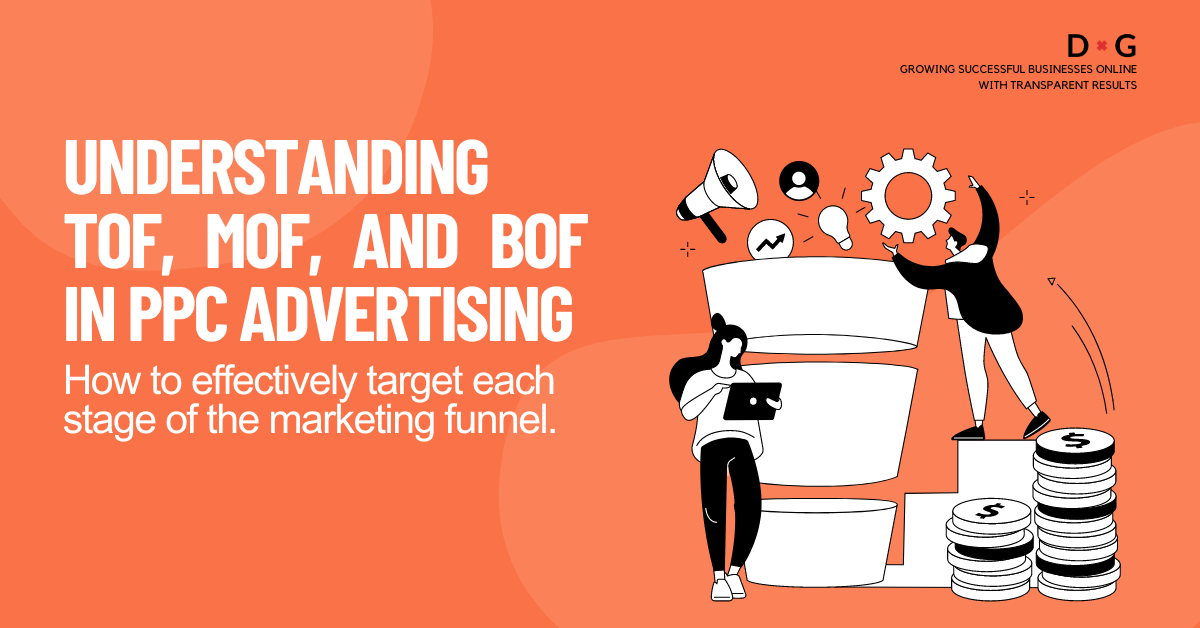
Pay-Per-Click (PPC) advertising is a powerful tool to attract customers. To make the most of it, you need to understand the three main stages of the marketing funnel: Top of Funnel (TOF), Middle of Funnel (MOF), and Bottom of Funnel (BOF).
Each stage helps guide potential customers from just learning about your brand to making a purchase.
This guide will explain each stage and show you how to use them effectively in your PPC campaigns.
What is TOF (Top of Funnel)?
Top of Funnel (TOF) is where potential customers first hear about your brand or product. At this stage, you want to reach as many people as possible to make them aware of your brand.
The aim is to attract attention and generate interest.
Broad Targeting
TOF campaigns reach a large, general audience.
Building Awareness
The main goal is to make people aware of your brand and spark their interest.
Informative Content
TOF ads often provide information or entertainment to introduce your brand.
When to Use TOF
Knowing when to deploy TOF strategies is essential for capturing attention and generating awareness for your brand.
TOF campaigns are effective in several key scenarios:
Launching New Products
Use TOF campaigns to introduce new products or services to a wide audience.
Expanding Market Reach
If you want to reach new or larger markets, TOF is a good choice.
Increasing Brand Visibility
For brands that are new or not well-known, TOF campaigns help get your name out there.
What is MOF (Middle of Funnel)?
Middle of Funnel (MOF) is the stage where people are considering your product or service. They know about your brand and are looking for more information. MOF campaigns focus on engaging these people and helping them understand why your product is the best choice.
Targeted Engagement
MOF targets people who have shown some interest in your brand but aren’t ready to buy yet.
Building Trust
Provide content that educates and builds trust with potential customers.
Detailed Information
Offer more in-depth details about your product or service, and how it compares to others.
When to Use MOF
MOF strategies are crucial for engaging and nurturing leads who have shown initial interest in your brand.
Deploying MOF campaigns is effective in these situations:
Generating Leads
Use MOF to capture contact information from interested prospects.
Engaging Your Audience
Target people who interacted with your TOF content and are curious to learn more.
Nurturing Relationships
Build and strengthen relationships with potential customers to guide them toward making a purchase.
What is BOF (Bottom of Funnel)?
Bottom of Funnel (BOF) is the final stage where people are ready to make a purchase. BOF campaigns are very targeted and aim to convert interested leads into paying customers. The focus here is on closing the sale.
High Intent Targeting
BOF targets people who are close to making a decision to buy.
Conversion Focused
The goal is to get these potential customers to take action, like making a purchase or signing up.
Specific Audience
BOF campaigns usually have a smaller, more defined audience compared to TOF and MOF.
When to Use BOF
BOF strategies are all about converting highly interested prospects into customers.
BOF campaigns are effective in the following scenarios:
Targeting Ready-to-Buy Customers
Focus on users who have shown strong buying intent.
Retargeting Abandoned Carts
For online stores, aim at users who have added items to their cart but haven’t checked out.
Offering Special Deals
Use limited-time offers or discounts to encourage people to buy now.
How to Balance TOF, MOF, and BOF in PPC Campaigns
Balancing TOF, MOF, and BOF is key to a successful PPC campaign.
Here is how to manage it:
Distribute Your Budget Wisely
Allocate your budget across TOF, MOF, and BOF based on your goals and the customer journey.
Monitor Performance
Regularly check how your campaigns are doing and make adjustments as needed.
Match Content to Audience Intent
Make sure your ads match what your audience is looking for at each stage.
Use Retargeting
Use retargeting to move people from awareness to consideration to conversion.
Common Mistakes to Avoid in TOF, MOF, and BOF Campaigns
Avoid these common mistakes to make your campaigns more effective:
Not Segmenting Your Audience
Without proper audience segmentation, you might waste ad spend and get lower conversions.
Using the Wrong Tactics
Don’t use BOF tactics for TOF audiences or vice versa; it won’t work well.
Ignoring Mobile Users
Ensure your ads and landing pages are optimised for mobile devices.
Inconsistent Messaging
Keep your messaging consistent across all stages to avoid confusing potential customers.
Conclusion
Understanding and using TOF, MOF, and BOF strategies effectively is crucial for guiding potential customers through their buying journey. By targeting the right people with the right message at each stage, you can maximise your advertising efforts and achieve better results for your business.
Whether you want to build brand awareness, engage leads, or convert ready-to-buy customers, mastering TOF, MOF, and BOF will boost your PPC campaigns and help you succeed.
Need help with your PPC campaigns? Contact us today to learn how we can optimise your TOF, MOF, and BOF strategies for maximum impact.
Read our blog about the 6 Advantages of Working with a Digital Marketing Agency.
